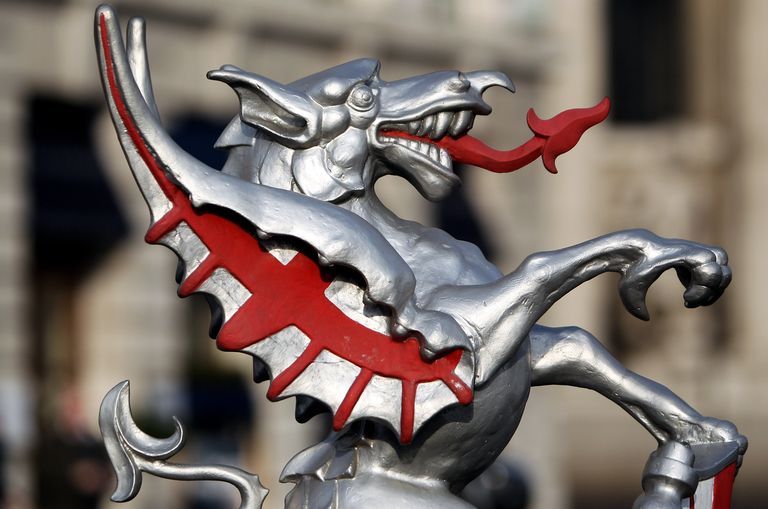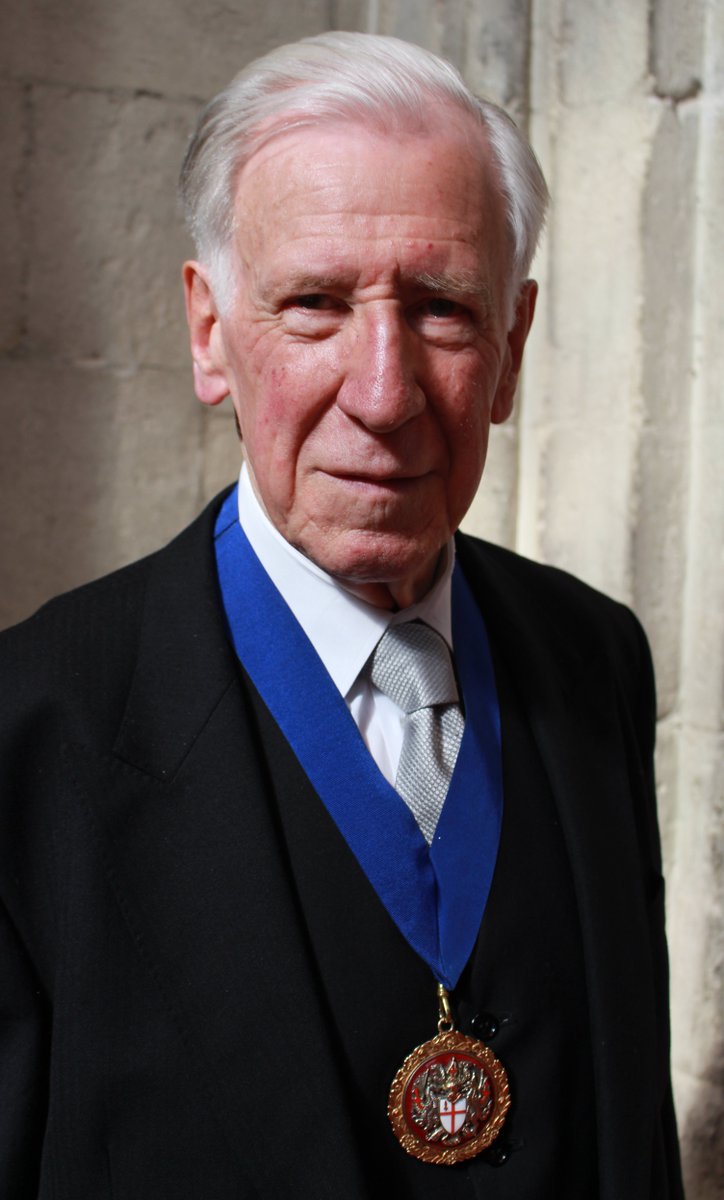Post
REPORT | Great Estates, the City of London
24 Oct 2017
On 3 October, Michael Welbank, Chief Commoner and Past Chairman of the Planning and Transportation Committee talked to the Society as part of our Great Estates series. Barry Coidan was in the audience.
A sizeable audience was treated to a brisk canter through the byways and backwaters of the City of London and its Great Estates. Chief Commoner Michael Welbank was a most convivial guide whose obvious delight in his subject matter carried us along with him.
Before detailing the three Estates - the Bridge House Estate, City Fund and City’s Cash - and the use to which their incomes are put, Mr Welbank gave us a brief history lesson.
There is no surviving record of a charter first establishing the Corporation as a legal body, but the City is regarded as incorporated by prescription. Around 1189, the City gained the right to have its own mayor, later being advanced to the degree and style of Lord Mayor of London.
The origins of what we now know as the City of London were lost in the midst of time. London was a centre of trade in Saxon times long before the Normans tried unsuccessfully to quell the citizens. William I wanted the City and its wealth generating prowess, and in 1067 he granted it a charter. It read "William King greets William the Bishop and Geoffrey the Portreeve and all the citizens in London, French and English, in friendly fashion; and I inform you that it is my will that your laws and customs be preserved as they were in King Edward's day, that every son shall be his father's heir after his father's death; and that I will not that any man do wrong to you. God yield you". The City was allowed to continue as it had done before the Conquest.
Subsequent rulers recognised, and if they forgot, were forced to recognise, the City’s importance. The three Great Estates of the City grew out of this recognition and the privileges bestowed to the City, for a monetary consideration, from monarchs down the ages. The Charter of 1444 formally granted to the City the ownership of the streets, ways, common soil and enclosures of the common soil. “Common soil” was the strip of land 16’ wide bordering the City’s walls. No building was allowed within that space as to do so would compromise its defensive nature. At a stroke the City gained a valuable asset.
In the early 17th century the Corporation of London loaned monies to Charles I, without interest or repayment and when, in 1627 these loans were extended, the Corporation gained Crown lands across the country in exchange. Some of these lands were subsequently sold off boosting the Corporation’s coffers. After the Restoration the City’s independence was threatened when Charles II stripped The City of London Corporation of its privileges, but they were later restored and confirmed by a 1690 Act of Parliament under William and Mary. With its status and privileges restored the City was well placed to benefit from economic growth in the 18th and 19th centuries, which has continued to this day.
[caption id="attachment_2295" align="alignleft" width="330"] Michael Welbank, Chief Commoner of the City of London[/caption]
The Bridge House Estate: The Trust’s origins can be traced back to 1092 when a storm swept away the then only bridge across the Thames. A special tax was raised to build a new wooden London Bridge which was then replaced in 1209 by the first stone bridge across the Thames. By the end of the 13th century the shops and houses on London Bridge were beginning to generate not only increased cross-river trade, but also increased taxes, rents and bequests. (In the 1700s the bridge was so popular that the congestion was extreme: it could take one hour to get over the bridge. To improve matters a “Keep Left” rule was put in place).
A significant fund began to accumulate which was administered from a building on the south side of the river called Bridge House, with the fund becoming known as the Bridge House Estates. This, however, did not stop Henry III in 1269 giving his wife Queen Eleanor the tolls from the bridge as a present: she spent the toll income on herself not the bridge. Not surprisingly the bridge fell into serious disrepair - the great gate at the end of the bridge collapsed - and it was returned to the control of the City in 1281. The nursery rhyme “London Bridge is Falling Down” may originate from this time (although there are several other competing legends).
The 1666 Great Fire did little damage to the bridge, but change was on the way with the rapid economic growth in the 18th century. In the 1760s the two central spans were replaced by a wider single span, but it was clear the old bridge needed replacing. In 1830, after 600 years the old bridge was demolished and replaced by one financed by the City of London and the Government.
This heralded a new era for the Estate, with the funding of the building of Blackfriars Bridge, the purchase of Southwark Bridge and towards the end of the 19th century the construction of Tower Bridge. More recently it has taken over the ownership and maintenance of the pedestrian only Millennium Bridge. With income well in excess of expenditure the Estate’s charitable arm City Bridge Trust has, since 1995, disbursed grants to organisations throughout London (in 2015/16 260 grants amounting to #20 million). The Estate’s primary function, however, remains the maintenance of its five bridges.
The City Fund: The Fund covers the City Corporation’s activities in its capacity as a local authority, police authority and port health authority. It is made up of business rates, council tax, various government grants and income from investments. It funds the Barbican Centre which is at the centre of the Barbican Estate built in the 1960’s following serious bomb damage in World War II.
City’s Cash: City’s Cash is a fund of the City of London Corporation that can be traced back to the 15th century and has been built up from a combination of properties, land, bequests and transfers under statute since that time. Investments in properties, stocks and shares are managed to provide a total return that allows the City Corporation to provide services that are of national benefit. Its core objective is to promote UK-based financial services, and related professional services, at home and abroad. City’s Cash also supports work in surrounding boroughs supporting education, training and employment opportunities; numerous green spaces including Hampstead Heath and Epping Forest, wholesale markets providing fish (Billingsgate) and meat (Smithfield), schools (City of London School, City of London School for Girls, City of London Freemen’s School, Academies across London and the Guildhall School of Music & Drama).
After the talk there were a number of questions. In particular, to what extent the City Fund had part funded the Cross Rail build. We were told that the City was putting some £400 million towards it although half was not to be paid over until the system was up and running.
One questioner wanted to know what was the impact of Canary Wharf on the City of London. It was true that this did provide competition but because of the narrow scope of Canary Wharf businesses, and the City having considerably more business diversity this limited the effect of competition.
There was a question about the development at Bank Junction involving the major development of the Bank Underground station. This did not involve any of the City’s Great Estates, although the Corporation was involved in appropriate compulsory purchase of land to facilitate that development.
Finally there was some criticism of City’s Cash, with the suggestion that it was a slush fund. Mr Welbank knocked back that claim and the suggestion that it had been involved in a land grab of Moorfields in 1810! This led onto “Operation Glasgow” the buying up land on the City’s fringes - so named as not to be confused with the “Edinburgh Fringe.” We were told that this was a continuation of a programme to buy up land which would benefit the life of the City.


